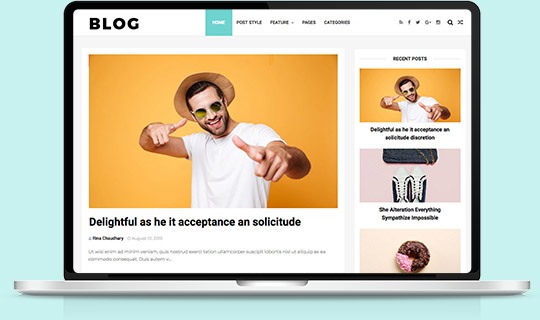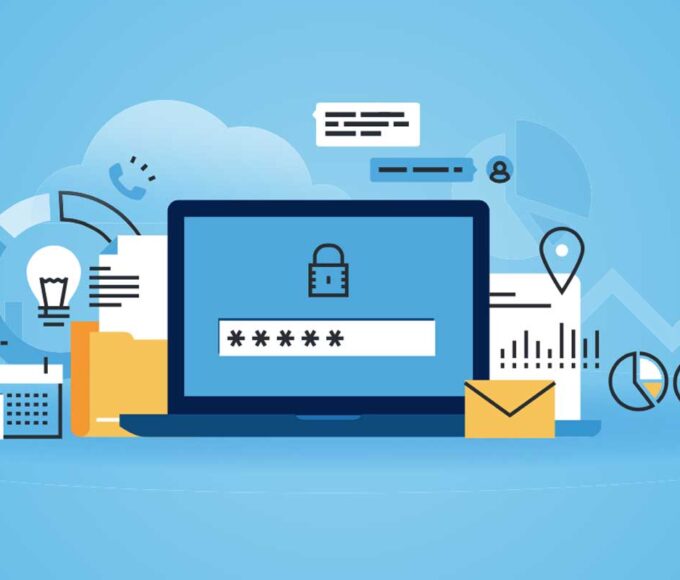Introduction
Blogging has evolved into one of the most effective ways for individuals and businesses to express ideas, share knowledge, and connect with audiences. Launching your first blog can be both exciting and overwhelming, especially with the myriad of platforms and tools available today. This comprehensive guide aims to provide a step-by-step approach to help beginners successfully establish their own blog, covering everything from choosing a blogging platform to promoting your content. Whether you’re a student, a job seeker, a tech enthusiast, or simply someone with a story to tell, this guide is designed to assist you in navigating the blogging landscape. 10 Essential Steps to Launch Your First Blog
10 Essential Steps to Launch Your First Blog
1. Define Your Blogging Purpose
Understanding Your Motivation
Before jumping into the technical aspects of blogging, it’s essential to understand why you want to start one. Your motivation could range from sharing personal experiences and expertise to building a brand or promoting a business. Identifying your blogging purpose will guide your content strategy and help keep you focused on your goals. Reflecting on what you are passionate about will not only fuel your creativity but also resonate with your audience.
Consider whether you want your blog to be a creative outlet, a source of income, or a platform for social change. Understanding your motivation can also help in managing expectations. Setting realistic goals for your blog will ensure a more fulfilling experience as you progress.
How to Download Instagram Reels?
Identifying Your Target Audience
Once you have a clear understanding of your motivation, the next step is to identify your target audience. This involves determining who your ideal readers are and what they are interested in. Conducting market research can provide insights into demographics, preferences, and behaviors of potential readers.
Creating reader personas can be a useful exercise; these are fictional characters that represent your typical readers. By understanding their interests, challenges, and motivations, you can create content that speaks directly to them, enhancing engagement and fostering a loyal readership.
2. Choose the Right Blogging Platform
Overview of Popular Platforms
Choosing a blogging platform is crucial as it affects your blog’s functionality and ease of use. The most popular blogging platforms include WordPress, Blogger, Wix, and Medium. WordPress is a favorite among many bloggers due to its flexibility and extensive plugin ecosystem — making it suitable for everything from simple blogs to complex websites.
Blogger is a more straightforward option for beginners looking to blog without the need for customization. Wix offers drag-and-drop capabilities, allowing users to easily create visually appealing blogs. Medium, on the other hand, is tailored more towards writers who want to focus on content rather than design. Assess your needs to determine which platform aligns best with your blogging goals.
Evaluating Features and Pricing
When selecting a blogging platform, consider the features offered and their associated costs. While some platforms are free, they may come with limitations such as ads or less control over your content. Evaluate features like ease of use, customization options, SEO capabilities, and customer support.
Investing in a premium platform can provide additional benefits, such as access to advanced tools and better customization options. Ultimately, weigh the pros and cons based on your blogging aspirations and budget.
3. Select a Domain Name
Importance of a Memorable Domain
Your domain name is your blog’s address on the internet and plays a significant role in branding. A good domain name should be memorable, easy to spell, and reflective of your blog’s content. It’s often the first impression readers will have of your blog, making it a critical component of your online identity.
A unique domain name can help distinguish your blog from others and establishes credibility. Take time to brainstorm and ensure the name you choose resonates with your audience and aligns with your blog’s purpose. 10 Essential Steps to Launch Your First Blog
Tips for Choosing the Perfect Name
When choosing a domain name, consider keeping it short and simple. Longer names can be easily misspelled or forgotten. Incorporate relevant keywords that reflect the niche of your blog, as this can enhance SEO. Additionally, avoid using hyphens and numbers, as they can confuse potential readers.
Before finalizing your domain name, check its availability. You can use domain registration sites to verify if your desired name is already taken. If it is, consider alternative variations or consider using different domain extensions like .net or .blog.
How to Turn Off Read Receipts in Facebook, iMessage and WhatsApp?
4. Find a Reliable Hosting Provider
Understanding Web Hosting Basics
Web hosting is a service that allows your blog to be accessible on the internet. Choosing a reliable hosting provider is essential for your blog’s performance, as it affects loading speed, site uptime, and security. There are various types of hosting available, including shared, VPS, and dedicated hosting, each with its own advantages and disadvantages.
Shared hosting is the most affordable option, ideal for beginners. However, it may lead to slower speeds if other sites on the server experience high traffic. VPS hosting offers more resources and control, while dedicated hosting provides the highest level of performance but at a higher cost. Evaluate your needs and budget when selecting a hosting plan.
Comparing Hosting Options
When comparing hosting providers, consider factors such as reliability, customer support, scalability, and pricing. Popular hosting providers include Bluehost, Site Ground, and HostGator, each offering various plans tailored for bloggers. Read reviews and testimonials to gain insights into the experiences of other users.
Check for features like one-click installations for WordPress, SSL certificates for security, and backup options. A good hosting provider will be crucial for your blog’s success, as it ensures that your site runs smoothly and efficiently.
5. Set Up Your Blog Design
Choosing a Theme
The design of your blog can significantly influence the user experience. Most blogging platforms offer a range of themes that dictate the layout and aesthetic of your site. Choose a theme that aligns with your blog’s purpose and appeals to your target audience. Consider factors such as readability, navigation, and overall appeal.
While free themes can be a great start, premium themes often offer better customization options and support. Ensure that the theme you choose is responsive, meaning it should work well on both desktop and mobile devices.
Customizing Your Blog’s Appearance
Once you have selected a theme, it’s time to customize it to reflect your brand. Personalizing colors, fonts, and layouts can make your blog uniquely yours. Add elements such as a logo and an engaging header image to create a professional look.
Ensure that your design is user-friendly, allowing for easy navigation. Consider the placement of menus and sidebars, and make sure important information is easily accessible. A well-designed blog enhances the reader’s experience and encourages them to return.
How to Check an AirTag’s Battery Life and Replace Existing Battery?
6. Create Essential Pages
About Page
The About page is an essential section of your blog, as it introduces you and your blog’s mission to your readers. A well-crafted About page can build trust and establish a connection with your audience. Share your story, including your background, expertise, and what readers can expect from your blog.
Incorporating a personal touch, such as photos or anecdotes, can make your About page more relatable. Encourage readers to engage with your content by outlining your goals and inviting them to join your journey. 10 Essential Steps to Launch Your First Blog
Contact Page
A Contact page is vital for facilitating communication between you and your readers. This is where readers can reach out with questions, feedback, or collaboration opportunities. Include a contact form and consider providing additional contact options, such as email or social media links.
Be transparent about how you will use the information shared with you. This can help build trust and encourage more readers to reach out. Make sure this page is easily accessible from your blog’s menu.
Privacy Policy and Terms of Service
In today’s digital landscape, having a Privacy Policy and Terms of Service page is crucial for compliance with legal requirements. A Privacy Policy explains how you collect, use, and protect your readers’ personal information, while the Terms of Service outlines the rules and guidelines for using your blog.
While it may seem daunting, there are various online generators that can help you create these documents. Ensure they are easy to find and understand, as transparency fosters trust among your readers.
7. Plan Your Content Strategy
Brainstorming Blog Topics
A solid content strategy begins with brainstorming topics that resonate with your target audience. Consider conducting keyword research and exploring trending topics within your niche. Look for gaps in existing content where you can provide unique insights or perspectives.
Engaging in discussions on social media or within blogging communities can also inspire new ideas. Keep a running list of potential topics to ensure you always have content to draw from when needed. This proactive approach will help maintain consistency in your blogging schedule.
Creating an Editorial Calendar
An editorial calendar is an invaluable tool for organizing your content and maintaining a consistent posting schedule. Outline your planned topics, publication dates, and any relevant deadlines. This not only keeps you accountable but also helps in strategizing seasonal or timely content.
Using tools like Google Calendar or dedicated content planning software can simplify this process. Regularly review and adjust your calendar based on reader feedback, analytics, and any changes in your blogging goals.
17 Best Korean Military K-Dramas
8. Write Your First Blog Post
Structuring Your Blog Post
Once you have a topic in mind, it’s time to write your first blog post. Structuring your post effectively is crucial for readability and engagement. Start with a compelling introduction that captures the reader’s interest and clearly outlines what the post will cover.
Use subheadings to break up large sections of text and guide readers through your content. Incorporating bullet points or numbered lists can also enhance clarity and make key points more digestible. A strong conclusion that summarizes your main ideas can leave a lasting impression on your readers.
Tips for Engaging Writing
Engaging writing is key to retaining readers and encouraging them to share your content. Use a conversational tone that reflects your personality, making your blog feel approachable. Avoid jargon and complex language; instead, aim for clarity and simplicity.
Incorporating storytelling techniques can also add depth to your posts. Share personal experiences, anecdotes, or case studies that relate to your topic. This not only makes your content more relatable but also fosters a connection with your audience.
9. Optimize for SEO
Understanding SEO Basics
Search Engine Optimization (SEO) is the practice of enhancing your blog’s visibility on search engines. Understanding SEO basics is essential for driving organic traffic to your blog. Key components of SEO include keyword research, on-page optimization, and backlinking.
Recognizing how search engines work can set the foundation for your SEO strategy. Consider focusing on long-tail keywords, as they are less competitive and often more relevant to niche topics. Integrating these keywords naturally into your content can improve your chances of ranking higher in search results. 10 Essential Steps to Launch Your First Blog
Using Keywords Effectively
To harness the power of keywords, begin by conducting thorough research using tools like Google Keyword Planner or Ubersuggest. Identify keywords that align with your content and audience interests. Once you’ve selected your keywords, strategically place them in key areas such as the title, headings, and throughout the content.
However, avoid keyword stuffing, as it can detract from readability and harm your SEO ranking. Focus instead on creating high-quality, informative content that provides value to your readers while incorporating keywords naturally.
10. Promote Your Blog
Utilising Social Media
Promotion is a vital aspect of blogging that can significantly impact your blog’s reach and readership. Social media platforms such as Facebook, Twitter, Instagram, and LinkedIn offer excellent opportunities to share your content and connect with your audience. Tailor your promotional strategies to the platform you choose, as each has its own best practices.
Engaging with your followers by responding to comments, sharing relevant content, and participating in discussions can foster a sense of community. Consistently sharing your blog posts and utilizing eye-catching visuals can also enhance visibility and engagement on social media.
Engaging with Blogging Communities
Engaging with other bloggers and communities within your niche can provide mutual benefits. Consider joining blogging forums, Facebook groups, or subreddits focused on your interests. These platforms not only offer support and advice but also opportunities for collaboration and guest posting.
Networking within these communities can lead to increased exposure for your blog. Be genuine in your interactions, and focus on building relationships rather than solely promoting your content. This approach can foster long-term support and drive traffic to your blog.
How to Start a WhatsApp Chat Without Saving It as a Contact?
Conclusion
Starting your first blog is an exciting venture that involves careful planning and execution. By following these ten essential steps—from defining your purpose to promoting your content—you can lay a strong foundation for a successful blogging journey. Remember that consistency, engagement, and quality content are key components in building a loyal audience.
As you embark on this journey, be open to learning and adapting your strategies. The blogging landscape is always evolving, and staying informed will help you navigate the challenges and seize opportunities. Happy blogging!
FAQs
1. How long does it take to start a blog?
The time it takes to start a blog can vary based on your preparedness and chosen platform. With a clear plan and the right tools, you can set up a blog within a few hours. However, building content and establishing an audience will take time and effort.
2. Do I need technical skills to start a blog?
While some technical skills can be beneficial, most blogging platforms are user-friendly and require minimal technical knowledge. Many platforms offer tutorials and support to help you through the setup process.
3. Can I monetize my blog?
Yes, there are several ways to monetize your blog, including affiliate marketing, sponsored posts, and advertising. As your blog grows, you can explore different monetization strategies that align with your content and audience.
4. What should I write about on my blog?
Your blog should focus on topics that you are passionate about and that resonate with your target audience. Consider your expertise, interests, and what readers are searching for within your niche.
5. How often should I post on my blog?
Consistency is vital in blogging. Aim for a posting schedule that is manageable for you, whether that’s weekly, bi-weekly, or monthly. Quality is more important than quantity, so focus on creating valuable content rather than forcing frequent posts. 10 Essential Steps to Launch Your First Blog





